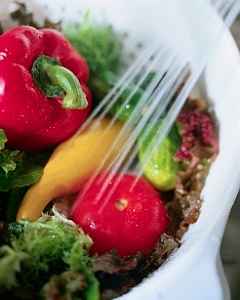Contact
Dr. Amanda Philyaw Perez
Phone: 501-671-2228
Email: aperez@uada.edu
Sarah Bakker
Phone: 501-671-2012
Email: sbakker@uada.edu
USDA Good Agricultural Practices
 Each year an estimated 16 million Americans acquire food-borne illness from eating
fresh produce according to the Center for Disease Control. Fecal contamination of
produce items that do not received a heat or cook step prior to consumption is the
most common culprit. Fecal bacteria like Salmonella, E coli and Listeria monocytogenes
find their way to fresh produce via irrigation or wash water, application of improperly
composted manure, droppings from domestic animals and wildlife, and poor hygiene of
harvest crews. Good Agricultural Practices (GAP) are science-based recommendations
to minimize contamination incidents. GAPs are "best practices" that minimize the presence
of fecal microorganisms and prevent the spread harmful pathogens.
Each year an estimated 16 million Americans acquire food-borne illness from eating
fresh produce according to the Center for Disease Control. Fecal contamination of
produce items that do not received a heat or cook step prior to consumption is the
most common culprit. Fecal bacteria like Salmonella, E coli and Listeria monocytogenes
find their way to fresh produce via irrigation or wash water, application of improperly
composted manure, droppings from domestic animals and wildlife, and poor hygiene of
harvest crews. Good Agricultural Practices (GAP) are science-based recommendations
to minimize contamination incidents. GAPs are "best practices" that minimize the presence
of fecal microorganisms and prevent the spread harmful pathogens.
Whether you are a grower for a large retail food chain or distribute primarily at local farmers' markets, integrating GAP into your farm operation will ultimately reduce your legal liability and enhance the safety of your food products. A food-borne outbreak originating from your farm can financially devastate you and your family. Therefore, it is in your best interest to make sure you follow these GAP practices as much as possible.
The following fact sheet series introduce the topic and provide educational guidance to improve the safety of your food products.
FSA9800 - The Food Safety Modernization Act Proposed Food Safety Rules
FSA9801 - Good Agricultural Practices (GAP) Food Safety Plans and Audits